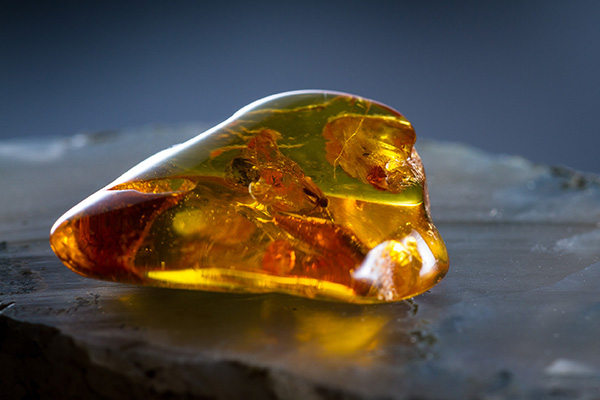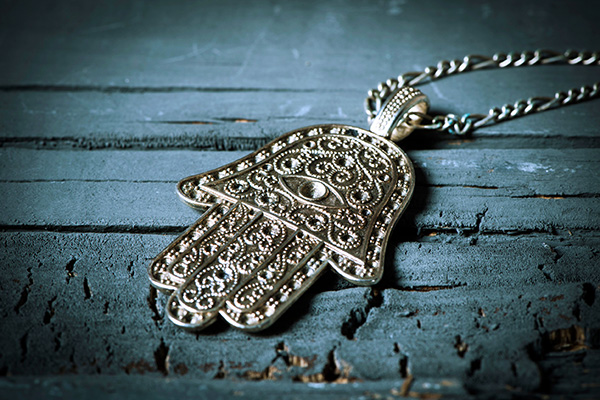The Importance of Serendipity, Synchronicity, and the Balance of Existence
 Something extraordinary took place yesterday that reminded me of the numerous beautiful coincidences and perfect timings that unfold in our lives on a daily basis, often without our awareness. More frequently than we comprehend, we find ourselves in the right place, at the right time, engaged in the right activity – it’s never just happenstance.
Something extraordinary took place yesterday that reminded me of the numerous beautiful coincidences and perfect timings that unfold in our lives on a daily basis, often without our awareness. More frequently than we comprehend, we find ourselves in the right place, at the right time, engaged in the right activity – it’s never just happenstance.
Many situations in our everyday existence appear to occur by chance or luck, yet they are perfectly timed moments uniquely tailored for us.
These moments, often labeled as “fate” or “coincidence,” are definitely not random events. They form part of the intricate harmony of universal flow and divine order, crafting the everyday wonder of serendipity and the miracle of synchronicity for our greatest benefit.
Yesterday, I had a lengthy list of errands to complete downtown, two of which were located on the same street. My plan was to first collect an item from a courier service, then deliver some household items I wanted to donate at a local animal charity shop.
However, while heading toward the courier, I took a turn I don’t usually take, which directed me straight to the charity shop instead. I was pleasantly surprised to find a parking space right in front of the door, as I had heavy boxes and crates to unload. How ‘fortunate’ it was that a perfect parking space awaited me, I thought.
But my ‘incorrect’ turn proved to be not just a hidden blessing, but also a minor miracle that kept on giving. Because I arrived at the shop ahead of my original schedule, I “unexpectedly” bumped into a customer who was in the process of buying the kitchen blender I had donated to the charity over a month prior.
The universe continuously communicates with us… sending us little nudges, creating coincidences and serendipities, urging us to pause, to observe, to believe in something deeper, something greater ~ Nancy Thayer
<pI found that despite the clerk's reassurances that the blender had been tested and was functioning, they could not get it to turn on! I stepped in and explained that I had donated the blender and that it worked flawlessly when I last used it. I also mentioned that I donated it because of an upcoming move that limited my ability to take many items with me. I inquired if I could try to fix the machine, and indeed, with a sturdy twist of the lid, the blender whirred to life and operated perfectly on all settings.
The customer was delighted and explained that she urgently required a reliable blender as she was expecting family over and needed to prepare meals for several days. She was constrained financially and unable to purchase a brand new blender amongst other costs as the host.
My immediate thought was: of all the minutes, hours, and days of the week, what a curious coincidence that I was right there to get my beloved old blender functioning! Being at the right place at the right time? I suppose “good fortune” and “pleasant coincidence” undoubtedly served us all exceptionally well that day!
This experience also brought me much happiness during a transitional period in my life. While it’s always heartening to know that my donations support animal rescue efforts, it felt even more gratifying to witness something as simple as a kitchen blender enhancing someone else’s life.
Later, I felt compelled to pull a card from one of my cherished oracle decks, and the message was both relevant and timely: “When your life change or relocation happens smoothly and effortlessly, you’ll know it’s been orchestrated by spirit, manifesting in perfect timing.”
We often overlook serendipity and synchronicity in our lives, even though they are expressions of a deeper spiritual reality that transcends our usual understanding. These supposedly random events are signs of divine guidance, spiritual direction, and the wondrous universal flow shaping our everyday lives like a sacred melody.
I believe wholeheartedly in serendipity, all the random pieces fitting together in a beautiful moment, where suddenly you understand what their purpose was all along ~ David Levithan
The Enchanting Mishaps Of Serendipity
Serendipity involves seemingly random “lucky breaks” or “fortunate mishaps” that benefit us unexpectedly. Serendipitous occurrences are gentle signals from the universe where spirit and the divine open a path or present us with unforeseen chances. It’s the discovery of something wonderful without any intention to pursue it.
These “lucky” occurrences are small blessings and daily gifts from the universe that align with our true path and purpose. It is the “happy accident” or “good fortune” that opens a new door, leads to a favorable outcome, solves lingering issues, or inspires a new course. In these magical instances, we receive just what we need, sometimes without even realizing it – whether it’s a transformative idea, an enlightening book that shifts our viewpoint, or an ideal solution that emerges right when we are ready to give up.
Serendipity is never merely an accident or coincidence – it is divine intervention; a sign that spirit is navigating our journey. It’s the universe answering our inner desires in such an effortless, organic manner, it feels like magic.
Serendipity serves as a gentle push from the divine, leading us toward our true purpose and highest potential, guiding us towards significant personal and spiritual development and satisfaction. It also represents a manifestation of karma, where positive actions yield positive outcomes. It’s a key reminder that often the best experiences unfold not through force or planning, but when we let the flow of life lead us.
Synchronic events are like mirrors reflecting something about ourselves. If we seek spiritual growth, all we need is to examine closely. Synchronicity promises that if we desire internal change, the patterns in our external lives will transform as well ~ Jean Shinoda Bolen
The Miraculous Coincidences Of Synchronicity
Synchronicity pertains to meaningful coincidences that relate directly to our inner state, our spiritual evolution, or an intention we’ve set. These occurrences appear to be purposefully orchestrated. They are unplanned coincidences or unexpected sequences of events leading to wonderful outcomes. It represents the intentional timing and synergy of events in our daily existence. It reveals the unseen influence of spirit and the divine, coordinating each aspect of our lives in perfect harmony at just the right time.
These miraculous moments are often too unlikely to be mere coincidences. For instance, contemplating a friend you haven’t seen in years and then getting a call from them on the same day, or bumping into them shortly after. Surprisingly, despite how evidently improbable synchronic events can be, many individuals overlook them, or if they notice, they dismiss them as just “coincidences.”
As people enter and exit our lives, it’s beneficial to recognize that we meet no one by mere chance and that all occurrences serve a purpose. This holds true for everyone we encounter. Some may come into our lives temporarily as a support system. Others may turn our world upside down, yet we love them nonetheless and hope they will evolve with our assistance!
Some individuals arrive to stay for a time and teach us to embrace love, while others arrive to instruct us about heartbreak. A few come to stimulate our spiritual growth and motivate us to heed our life’s calling by highlighting the traits within us that we fail to recognize. We are all each other’s educators in this soul journey called Earth.
Synchronicity demonstrates how spirit and the divine affect our life journeys and shape our destinies. It reflects the interconnectedness of all things in the cosmos, resulting from a cosmic order and divine strategy that crafts our daily lives. When we remain open, attuned, and mindful, we start to notice that everything in our lives unfolds according to a divine plan and timing. We come to appreciate that something greater influences our experiences, allowing us to sync with the universe’s rhythm.
With synchronicity, all necessary resources are provided at the precise moment they are needed. Everything is perfect. We simply need to acknowledge this to align with the flow. Everything occurs for a reason, and each experience offers a lesson ~ Alex Chua
The Divine Symphony Of Life
Envision the universe as an expansive symphony, where every note, instrument, and arrangement contributes to a continuous masterpiece. We are not merely passive listeners in this symphony – we are integral participants. The universe works for our highest good, orchestrating events, connections, synergies, and opportunities that align with our soul’s calling.
The secret to perceiving the beautiful harmonies of this divine symphony lies in our awareness, our capacity to remain open to life’s mysteries, and our readiness to look deeper. Each serendipitous moment, each synchronistic encounter, is akin to a magical note in this cosmic melody, seamlessly woven together. If we focus, we can hear the music being played for us individually, reminding us that we are never alone on our path.
To genuinely experience the cosmic symphony filled with magic and wonder, we must nurture a sense of awareness, reverence, and gratitude. Miracles unfold in the spaces between our aspirations, dreams, and expectations…and our fears, doubts, and skepticism. By surrendering to the life’s rhythm and paying attention, it reveals to us that every moment of every day is imbued with magic.
Reflecting now on how many significant aspects have culminated in my life, it appears that they have always turned out even better than anticipated. Over the years, I’ve noted that when I seek divine guidance and lean on the support of my ancestors, guides, and angels, everything tends to align more serendipitously. When we reach out for spiritual assistance and step aside, things just tend to improve, frequently in ways we would never have imagined.
Serendipity and synchronicity remind us that life is not merely a succession of random events, but rather a beautifully orchestrated dance of divine order and timing. Every chance encounter, each unexpected twist, is a piece of a larger narrative that the universe is scripting for us. It’s a tale rich with magic, wonder, and fortunate twists, all orchestrated for our best interests.
By placing our trust in this cosmic symphony and welcoming both planned and unforeseen experiences, we can begin to grasp that the universe is always working in our favor, playing its timeless melody to guide us to where we are intended to be. And within that symphony, we discover our connection to the mystery, wonder, and infinite possibilities of existence.
|
Shani is a qualified practitioner in Reiki, aromatherapy, reflexology, body spin, and animal telepathy who received psychic development training at the Arthur Findlay College of Psychic Research in England. A published writer, her articles and predictions have appeared in several respected magazines and on psychic websites, and she has read for many celebrities and even heads of state in Africa. Because of her empathy, people find it easy to connect with her. Every month, she attends a psychic circle and the information that comes through from Spirit never ceases to amaze everyone present. Though she was born in London, Shani has traveled the globe and has studied the art of African Mysticism, bringing her unique flavor to those seeking her incredible talents. What she has taken away from her many travels abroad, is that there is always a sort of longing clients have to be connected to the source of their being. Get a reading with Shani at PsychicAccess.com. |
The Importance of Serendipity, Synchronicity, and the Balance of Life
Life is a rich and nuanced journey, filled with myriad twists and turns. Along this path, we often encounter instances of serendipity, synchronicity, and the equilibrium of existence. These moments may appear random or coincidental, but they carry a deeper significance capable of shaping our lives in remarkable ways.
Serendipity, often described as a fortunate accident or a delightful surprise, refers to the unexpected revelation of something valuable or joyous while searching for something entirely different. It includes the spontaneous encounter, the unplanned meeting, or the serendipitous discovery that can lead to transformational opportunities. Serendipity teaches us that sometimes the best experiences in life arrive when we least anticipate them.
A well-known illustration of serendipity is Alexander Fleming’s discovery of penicillin. In 1928, Fleming observed that a mold had inadvertently contaminated one of his petri dishes, eliminating the bacteria he was studying. This accidental finding resulted in the development of the first antibiotic, revolutionizing modern medicine and saving innumerable lives. Without serendipity, this groundbreaking discovery might never have taken place.
In contrast, synchronicity refers to significant coincidences occurring in our lives. These events, while seemingly unrelated, harbor a profound connection or meaning for us personally. Synchronicity implies a concealed order or pattern within the universe, steering us toward our destiny or purpose.
Carl Jung, the esteemed Swiss psychologist, introduced the idea of synchronicity. He believed that such meaningful coincidences are not simply random but rather a manifestation of the collective unconscious, a deeper consciousness linking all individuals. Jung contended that synchronicity serves as a means for the universe to communicate with us, offering direction and understanding in our lives.
For instance, consider you are deliberating over a major life decision, and unexpectedly you stumble upon a book addressing precisely the issue at hand. This occurrence may be perceived as a synchronistic event, a message from the cosmos affirming your direction or signifying that you should heed the message contained in the book. Synchronicity encourages us to be vigilant toward the signs and messages presented by life since they may provide crucial guidance and insight.
The harmony of life encompasses both serendipity and synchronicity. It signifies the delicate balance and interconnectedness of all things in the universe. When we exist in harmony with life, we experience a sense of flow, ease, and alignment. We feel connected to the environment surrounding us, and everything seems to seamlessly fall into place.
Harmony can be reflected in nature, where ecosystems flourish due to the interdependence of diverse species. It can also manifest in human interactions, where understanding and connection between individuals foster a harmonious bond. By aligning ourselves with life’s natural rhythms, we access this harmony, enabling us to traverse challenges and embrace incoming opportunities.
To foster serendipity, synchronicity, and the harmony of life, it is vital to maintain an open and inquisitive demeanor. Embrace the unexpected and remain receptive to new encounters. Be attentive to the signs and synchronicities appearing in your life. Trust your instincts and heed your inner voice. Cultivate gratitude and mindfulness to remain present and connected to your surroundings.
In conclusion, serendipity, synchronicity, and the balance of life are not arbitrary occurrences but rather profound forces shaping our journey. They remind us that existence is not always predictable or linear but a tapestry of interwoven events and experiences. By welcoming these elements, we can navigate life with a sense of awe, purpose, and fulfillment. Continue reading













